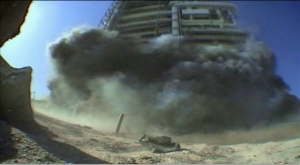Shooting a 3D documentary: Why most rigs won’t work
Now that we’ve chosen Iconix cameras to try and film elements of our first 3D documentary, I’ve moved into the minefield of rigs.
I’m running up against the same issues as I had with finding a camera that may work … only amplified.
There are even fewer beam splitter rigs that would work to film Blowdown – an event-based production in an industrial work environment – than there are cameras.
Here’s why: At this point in time the 3D supply companies are geared only to feature and giant screen projects.
This means the few beam splitter rigs that might fit the bill require at least 25 kilograms of equipment – and rent for roughly $6,000 per week.
One company gave us a quote to buy, coming in around $60,000 – plus camera, monitors and record decks – plus a Steadicam operator to schlep this around.
This just won’t work for us because of the:
– Cost: above our budget – which is on the high end for documentary;
– Crew power: the Steadicam operator would be an extra body to travel, house and feed; and
– Logistics: the weight and the sheer volume are above our single operator criteria – which is maximum 20 kilos: The camera, the rig, the steadicam, battery and monitor would weigh in almost five kilos too heavy, especially when you’re running around an industrial work site, trying to capture moments where you DON’T get another take.
Even if we could get past all these obstacles, if we could find a way to use these rigs, it turns out there’s only a few exist in the world … and they’re hopelessly tied up.



